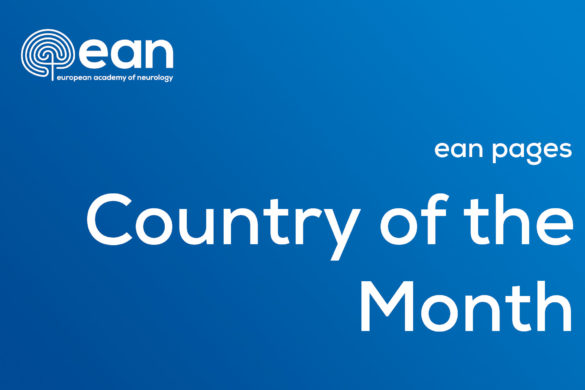This is the Land of Fire and the Pearl of the Caucasus, a land where eastern colors combine magnificently with western progress.
Azerbaijan is situated at the eastern side of the Transcaucasia on the shores of the Caspian Sea. The… Continue Reading
Category
Country of the Month
-
-
The roots of clinical neurology can be traced back to Germany. With his ”Lehrbuch der Nervenkrankheiten des Menschen“ (textbook of human nervous diseases) 1840, Moritz Heinrich Romberg (1795 – 1873) established the foundation of clinical neurology as we know it today. His work was the first and for decades the only systematic representation of neurological diseases in Europe and America, bringing him international fame and esteem.
-
oland is located in Central Europe between the Baltic Sea in the north, and the Sudetes and the Carpathian Mountains in the south, the majority of the area laying in the basin of the Vistula and Oder rivers. The country is inhabited by about 38 million people, and in terms of the area, which exceeds 300,000. km2, Poland is classified as 63rd on Earth. Its neighbours are: Germany, the Czech Republic, Slovakia, Ukraine, Belarus, Lithuania and Russia.
-
Portugal is a country with a 900-year history: many remnants of past colonization by Celtics, Romans, and Arabians are still present. Unquestionably, the greater contribution of Portugal to the humanity have been the overseas navigations around the world, namely the discovery of the maritime way to India, the discovery of Brazil and of several Atlantic islands.
-
Portugal is a country with a 900-year history: many remnants of past colonization by Celtics, Romans, and Arabians are still present. Unquestionably, the greater contribution of Portugal to the humanity have been the overseas navigations around the world, namely the discovery of the maritime way to India, the discovery of Brazil and of several Atlantic islands.
-
EAN NewsCountry of the MonthTop ArticlesFeatured Slider
Country of the month – Slovakia
April 1, 2018Slovakia, officially the Slovak Republic, is a country in Central Europe. The total area of the Slovak territory is 49 036 km2 and is mostly mountainous. The population is over 5 million. The capital and largest city is Bratislava. However, the Slovak Republic is a young state (established on January 1st, 1993, by the split of Czechoslovakia), indeed it is an old country with rich historical heritage. -
The Republic of Lithuania is a state in northern-eastern Europe occupying 65.300 km2 area with Vilnius city as capital and a population of 2.979.000 inhabitants. Neighbors of Lithuania are Latvia, Belarus, Poland, and Russia. It is a parliamentary democracy, with… Continue Reading
-
Kyrgyzstan is a Central Asia country of incredible natural beauty and proud nomadic traditions, landlocked and extremely mountainous with almost 90% of its territory being 1500 m above sea level. Its capital and largest city is Bishkek.
-
The French Republic was born in 1793, fruit of a long and tormented political history. France is a constitutional republic with a semi presidential regimen, and it has around 67 million people. The French national statement is “to govern the nation, by the nation and for the nation”, which fits well with our motto: “liberté, égalité, fraternité”. The capital is Paris, and the official language is French. Paris and the French Riviera are both high touristic places.
-
EAN NewsCountry of the MonthTop ArticlesFeatured Slider
Country of the month – Cyprus
November 1, 2017Situated at the north-eastern end of the Mediterranean basin, Cyprus is the third largest island in the region, with an area of 9,251 square kilometers (3,572 square miles). Cyprus is a small island with a long history and a rich culture that spans 10,000 years, making it one of the oldest civilizations in the Mediterranean area. Situated at the crossroads of three continents - Europe, Asia and Africa - the island’s unique geographic position has played an important part in its turbulent past since antiquity. The island was divided in 1974 following the Turkish invasion. -
Belgium occupies a central position in Western Europe, bordered by France, the Netherlands, Germany, Luxembourg, and the North Sea. Densely populated since ancient times, its inhabitants were famously dubbed by Caesar as “the strongest of the Gauls” (Horum omnium fortissimi sunt Belgae). In the Middle Ages this geographical area was occupied by independent fiefdoms which were later united with the northern Dutch provinces by the Dukes of Burgundy; together, they were called “The Low Countries”
-
The Rebuplic of Serbia is situaded on the Balkan Penisula and is inhabited with more than 7,000,000 people. With its geoghrafical, pollitycal and cultural position Serbia always united East and West. Giving its history along the centuries - long shape and turbulent past resulting in constant migration of population, Serbia became a multiethic, multicultural and multiconfessional society.
-
The Kingdom of the Netherlands, also known as Holland, has been densely populated from medieval times with the largest part of the population living in cities. Amongst these are many well-preserved gems like the university town of Leiden, where Rembrandt van Rijn was borne, Haarlem, the city of Frans Hals, the cheese town Alkmaar in the north, the Hansa town of Deventer in the east, the astute university city of Groningen in the north and Maastricht, the capital of the province of Limburg.
-
Romania geographically belongs to Eastern Europe, but by history, tradition and culture it is perfectly expressing the values of an United Europe. With the Danube River as a large part of our Southern border (with Serbia and Bulgaria), the Danube… Continue Reading
-
Hungary is a unitary parliamentary republic in the Central Europe. It covers an area of 93,030 square kilometres, situated in the Carpathian Basin. With about 10 million inhabitants, Hungary is a medium-sized member state of the European Union. The official language is Hungarian. Hungary's capital and largest metropolis is Budapest.

